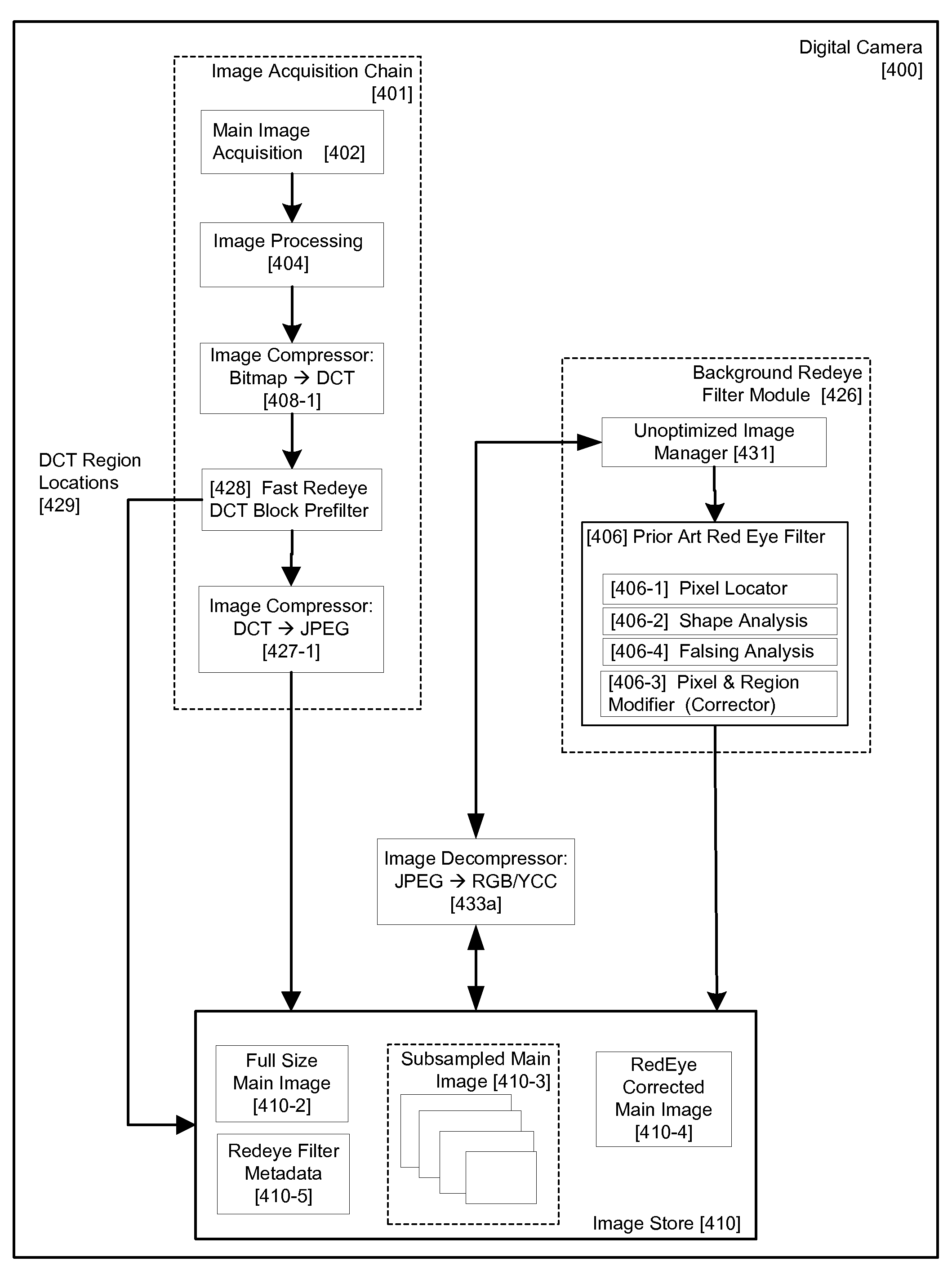Two Stage Detection for Photographic Eye Artifacts
a technology of photographic eye artifacts and detection algorithms, applied in image data processing, color television, television systems, etc., can solve the problems of high computation and memory resources, detection algorithms are only able, and the face detection is not rotated in-plane or out-of-plane with respect to the image plane, etc., to achieve accurate image analysis and avoid disadvantages. general effects
- Summary
- Abstract
- Description
- Claims
- Application Information
AI Technical Summary
Benefits of technology
Problems solved by technology
Method used
Image
Examples
Embodiment Construction
[0036]A red eye process in accordance with a preferred embodiment is illustrated in FIG. 1(b). An input image 110 is processed by a pixel analyzer 103, segmented into a set of candidate regions 104 and subsequently passed through a set of falsing & verification filters 106. these components form a speed optimized redeye detection filter 100 corresponding generally to the filter 100 of FIG. 1(a), except that in the embodiment illustrated at FIG. 1(b), filter 100 is modified so that candidate redeye regions which, instead of being ultimately classified as false positives, based on their size or probability being below a predetermined threshold are saved as candidate regions 109 for a subsequent optimized analysis 101.
[0037]Thus, in this embodiment the falsing & verification filters 106 generates a set of secondary candidate regions 109 in addition to the set of confirmed redeye regions 108. The set of secondary candidate regions may include members of the original candidate region set...
PUM
 Login to View More
Login to View More Abstract
Description
Claims
Application Information
 Login to View More
Login to View More - R&D
- Intellectual Property
- Life Sciences
- Materials
- Tech Scout
- Unparalleled Data Quality
- Higher Quality Content
- 60% Fewer Hallucinations
Browse by: Latest US Patents, China's latest patents, Technical Efficacy Thesaurus, Application Domain, Technology Topic, Popular Technical Reports.
© 2025 PatSnap. All rights reserved.Legal|Privacy policy|Modern Slavery Act Transparency Statement|Sitemap|About US| Contact US: help@patsnap.com



